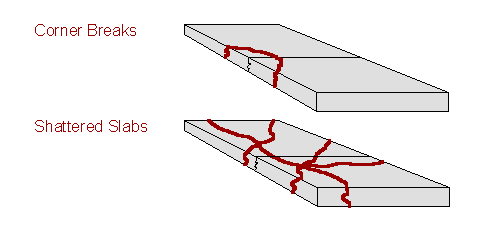Full-Depth Repair
Full-depth patching entails removing and replacing at least a portion of a slab to the bottom of the concrete, in order to restore areas of deterioration. Full-depth patches improve pavement rideability and structural integrity and extend pavement service life.

The most common problem that requires full-depth patching is joint deterioration. This includes any cracking, breaking, or spalling of slab edges on either side of a transverse or longitudinal joint. Often, this deterioration takes place on the bottom of the concrete slab and may not be visible from the surface.

Spalls that extend 3–6 inches from the joint are moderately severe and are a sign that more spalling could exist below. Only below-surface problems require full-depth replacement; for surface spalls partial-depth repair is usually acceptable.
Full-depth repair also is necessary to repair any corner breaks or any slabs with more than one intersecting crack. These are both signs of support problems and lack of structural strength.

Punchouts in continuously reinforced concrete pavements require full-depth repair. Punchouts can form after millions of loads. The longitudinal steel in the slab ruptures along the faces of two closely spaced cracks, and a small segment of concrete punches into the subbase. Punchouts are usually about 2 ft long. Punchouts can also occur where transverse cracks split into a Y about 1–3 feet from the edge of a lane.
Most full-depth repairs of joint deterioration or punchouts cover at least 70 square feet. For corner breaks or slabs with intersecting cracks, their size may correspond to the area of an entire slab (180 square feet for a 15 foot long slab).


